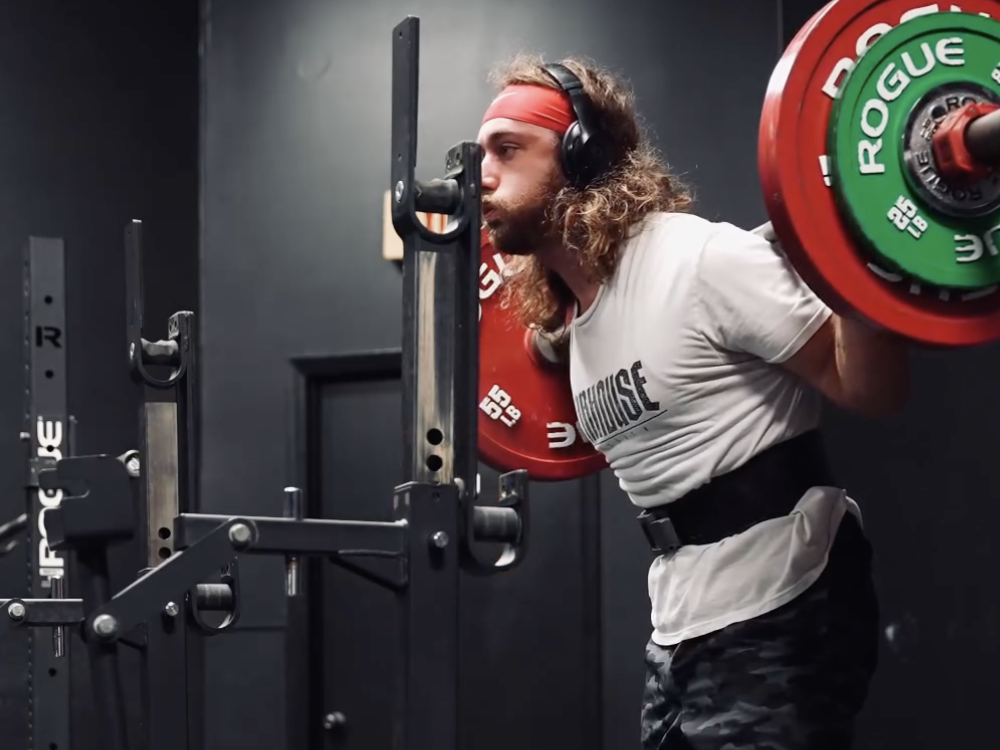The Squat Guide to Skyrocket Your Gains
Written by the Boostcamp staff
A staple lower body exercise
The barbell squat is a foundational lower-body exercise that builds both strength and size in the legs, glutes, and core while engaging just about the entire body. When performed with proper form, the squat is one of the best exercises for really packing muscle onto your frame and skyrocketing strength in all areas. To consistently progress with squat, you not only want to aim to use proper form, but using a structured squat program—like the programs available on the Boostcamp App—can help you maximize gains and improve technique safely.
Our team of experts at Boostcamp have put together a step-by-step guide on how to properly perform the squat and make the most out of Boostcamp for your squat training.
How to Properly Perform the Barbell Squat

Setting Up
Position Under the Bar: Stand under the barbell in the squat rack so that it rests across the top of your shoulders, just below the neck. Place it slightly lower if doing a low-bar squat.
Grip the Bar: Grip the bar slightly wider than shoulder-width, keeping your hands close to your shoulders. Squeeze your shoulder blades together to create a solid shelf for the bar to rest on.
Stand Tall: Lift the bar out of the rack by standing up, then take one or two steps back to position yourself.
Foot Position
Stance Width: Stand with your feet shoulder-width apart or slightly wider, with toes pointed slightly outward (about a 10–30° angle). Adjust your stance based on comfort and hip flexibility.
Weight Distribution: Keep your weight centered over your midfoot, with your heels and toes firmly planted.
Engage Your Core
Brace Your Core: Take a deep breath in, tighten your core, and brace as if preparing for impact. This stabilizes your spine throughout the movement. Much like the deadlift, a weightlifting belt could be beneficial to use during this movement.
Set Your Shoulders: Keep your shoulders engaged by pulling them back slightly, ensuring your upper body stays strong and stable.
Initiating the Squat
Begin with a Hip Hinge: Start the movement by pushing your hips back slightly, as if sitting into a chair. This helps keep the weight balanced over your midfoot.
Lower Your Body: Bend your knees and lower your body, keeping your chest up and spine neutral. Aim to lower until your thighs are at least parallel to the ground or slightly below, depending on your flexibility.
Keep Knees Aligned: Ensure your knees are tracking over your toes, not caving inward, to protect your joints and engage your leg muscles fully.
Rising from the Squat
Drive Through the Heels: Push through your heels to initiate the upward phase, engaging your glutes and hamstrings to stand back up.
Maintain Core Tension: Keep your core braced as you rise, moving your hips and chest upward together.
Lock Out at the Top: Fully extend your hips and knees at the top, returning to a standing position with a neutral spine and balanced posture.
Re-Racking the Bar
Step Carefully Back to the Rack: After completing your reps, walk forward and gently set the bar back into the rack hooks. Ensure it’s secure before releasing your grip.
Where to Find Good Squat Programs
Boostcamp is an excellent resource for squats, offering programs that focus on proper technique, strength progression, and balanced training. Here’s how Boostcamp can support your squat development:
Explore Squat-Centric Programs: Boostcamp offers a range of programs that help focus on squats and lower body strength. These programs help build a strong foundation and ensure proper form through progressive overload.
Track Your Progress: Boostcamp’s tracking feature lets you log your weights, sets, and reps, making it easy to see strength gains over time and adjust as needed.
Learn Accessory Movements: Programs often include accessory exercises, such as lunges and hamstring curls, that target muscles supporting your squat strength and stability.
Stay Consistent: Structured Boostcamp programs give you a clear roadmap for training, helping you build consistency and keep up with your goals.
Get Expert Guidance: Boostcamp’s programs are crafted by experienced coaches, ensuring you follow safe, effective squat programming backed by solid training principles.
More Tips for Squat Success
Prioritize Form Over Weight: Proper form reduces injury risk and makes strength gains more sustainable.
Warm Up Properly: Warm up with dynamic stretches or lighter squats to activate the muscles and joints.
Use Proper Footwear: Choose flat-soled shoes or shoes with a slight heel for better stability and squat depth. You could also purchase weightlifting shoes to keep in your gym bag if you feel the need.
Progress Gradually: Start with a manageable weight, then increase steadily as your strength and confidence grow.
Breathe Correctly: Inhale and brace before lowering, then exhale as you drive back up to keep your core engaged.
Wrap Up
By following these steps and pairing your training with a Boostcamp training program, you’ll be able to squat more effectively, safely, and consistently. Enjoy the process, and watch your strength grow!
Let us know what you think! And be sure to follow Boostcamp on Instagram and subscribe on YouTube!
 Images courtesy of Colin Monteith (headbandcol)
Images courtesy of Colin Monteith (headbandcol)

